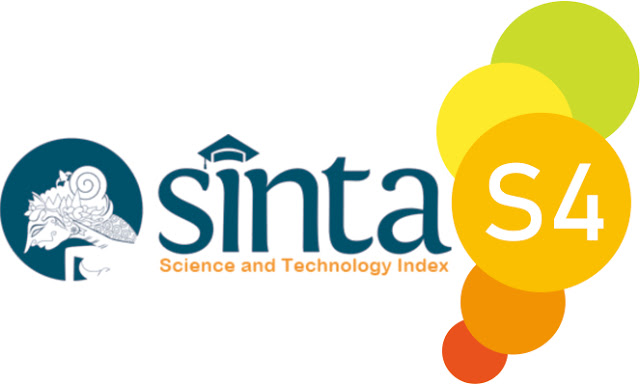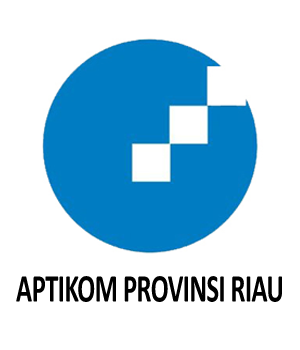Monte Carlo Simulation to increase the efficiency of Gas Distribution in Padang City
Abstract
PT. Cahaya Hermes Indo Abadi is one of the largest non-subsidized gas distributors in the city of Padang. Gas is a necessity in society. It is necessary to pay attention to the availability of gas to meet consumer needs, the state of gas stocks can affect the level of sales revenue. Sales relate to consumer desires for goods and services that they want to fulfill. Increasing the amount of gas demand can generate a large income. In predicting gas needs, a method is needed that is able to overcome society's gas needs. One of the methods used in this research is the Monte Carlo Method. This method is able to overcome further gas needs so data is needed to overcome this problem. The data used is 12 Kg non-subsidized gas sales data for three years, namely Gas Sales Data for 2021, 2022, and Gas Sales Data for 2023. The level of prediction accuracy in 2022 is 86.9% and in 2023 the accuracy is 86.6%. Based on the gas distribution simulation that has been carried out, the average is 86.75%. By obtaining a greater level of accuracy, this method is suitable for use and implementation in predicting future gas demand, making it easier for companies to make decisions in the future.
Downloads
References
Putra, B. M. (2020). Simulasi Monte Carlo dalam Memprediksi Tingkat Pendapatan Advertising. Jurnal Informatika Ekonomi Bisnis, 80-85.
Astia, R. Y., Santony, J., & Sumijan, S. (2019). Prediction Of Amount Of Use Of Planning Family Contraception Equipment Using Monte Carlo Method (Case Study In Linggo Sari Baganti District). Indonesian Journal of Artificial Intelligence and Data Mining, 2(1), 28-36.
Geni, B. Y., & Santony, J. (2019). Prediksi Pendapatan Terbesar pada Penjualan Produk Cat dengan Menggunakan Metode Monte Carlo. Jurnal Informatika Ekonomi Bisnis, 15-20.
Dari, R. W. (2020). Simulasi Monte Carlo dalam Prediksi Tingkat Penjualan Produk HPAI. Jurnal Informatika Ekonomi Bisnis, 86-91.
Thoriq, M., Syaputra, A. E., & Eirlangga, Y. S. (2022). Model Simulasi untuk Memperkirakan Tingkat Penjualan Garam Menggunakan Metode Monte Carlo. Jurnal Informasi dan Teknologi, 242-246.
Mahessya, R. A. (2017). Pemodelan dan Simulasi Sistem Antrian Pelayanan Pelanggan Menggunakan Metode Monte Carlo Pada PT Pos Indonesia (Persero) Padang. Jurnal Ilmu Komputer, 6(1), 15-24.
Santony, J., & Yunus, Y. (2019). Simulasi Monte Carlo untuk Memprediksi Hasil Ujian Nasional (Studi Kasus di SMKN 2 Pekanbaru). Jurnal Informasi Dan Teknologi, 1-6.
Apri, M., Aldo, D., & Hariselmi, H. (2019). Simulasi Monte Carlo untuk Memprediksi Jumlah Kunjungan Pasien. JURSIMA (Jurnal Sistem Informasi Dan Manajemen), 7(2), 92-106.
Zulfiandry, R. (2018). Optimasi Kegiatan Pelatihan Menggunakan Metode Simulasi Monte Carlo (Studi Kasus di Balai Latihan Kerja Dinas Tenaga Kerja dan Transmigrasi Provinsi Bengkulu). ILKOM Jurnal Ilmiah, 10(1), 113-119.
Putra, D. E., & Melladia, M. (2022). Prediksi Penjualan Sprei Kasur Toko Coco Alugada Menggunakan Metode Monte Carlo. JUTEKINF (Jurnal Teknologi Komputer dan Informasi), 10(2), 115-126.
Syaputra, A. E., & Eirlangga, Y. S. (2022). Akumulasi dan Prediksi Tingkat Penjualan Minuman dengan Menerapkan Metode Monte Carlo. Jurnal Informasi dan Teknologi, 148-153.
Amalia, E. L., Yunhasnawa, Y., & Rahmatanti, A. R. (2022). Sistem Prediksi Penjualan Frozen Food dengan Metode Monte Carlo (Studi Kasus: Supermama Frozen Food). Jurnal Buana Informatika, 13(02), 136-145.
Noviani, R., Nasution, Y. N., & Rizki, N. A. (2017). Klasifikasi Persediaan Barang Menggunakan Analisis Always Better Control (ABC) dan Prediksi Permintaan dengan Metode Monte Carlo. EKSPONENSIAL, 8(2), 103-110.
Ferdinal, D., Defit, S., & Yunus, Y. (2021). Prediksi Bed Occupancy Ratio (BOR) Menggunakan Metode Monte Carlo. Jurnal Informasi dan Teknologi, 1-9.
Dwika, R. (2022). Penerapan Metode Monte Carlo pada Simulasi Prediksi Jumlah Calon Mahasiswa Baru Universitas Muhammadiyah Bengkulu: Penerapan Metode Monte Carlo Pada Simulasi Prediksi Jumlah Calon Mahasiswa Baru Universitas Muhmammadiyah Bengkulu. Jurnal PROCESSOR, 17(2), 74-81.
Irwanto, M. R., Widiyaningtyas, T., & Arifin, M. Z. (2017). Implementasi algoritma monte carlo pada sistem informasi penerimaan peserta didik baru (ppdb) secara online. Teknologi dan Kejuruan: Jurnal teknologi, Kejuruan dan Pengajarannya, 40(1), 69-78.
Rambe, M. R., & Nasution, K. R. P. (2023). Penerapan Metode Monte Carlo pada Penjadwalan Proyek Gedung PuskesmasPadangMatinggiKotaPadangsidimpuan. STATIKA, 6(1), 87-98.
Hutahaean, H. D. (2018). Analisa simulasi monte carlo untuk memprediksi tingkat kehadiran mahasiswa dalam perkuliahan (studi kasus: STMIK pelita nusantara). Journal Of Informatic Pelita Nusantara, 3(1).
Yani, Z. (2021). Simulasi Algoritma Monte Carlo dalam Memprediksi Pendapatan Penjualan Produk Kalsium Tiens Syariah. Jurnal Informatika Ekonomi Bisnis, 8-15.
Wijaya, F. S., & Sulistio, H. (2019). Penerapan Metode Monte Carlo Pada Penjadwalan Proyek Serpong Garden Apartment. JMTS: Jurnal Mitra Teknik Sipil, 189-198.
HASANAH, W. P. (2022). Manajemen Persediaan Darah Komponen Packed Red Cell (Prc) Menggunakan Simulasi Monte Carlo (Studi Kasus: Palang Merah Indonesia Sleman
Simangunsong, A. (2023). Penerapan Metode Monte Carlo Dalam Simulasi Pengelolaan Persediaan Alat Tulis Kantor. Jurnal SAINTIKOM (Jurnal Sains Manajemen Informatika dan Komputer), 22(2), 280-289.
Triananda, M. I., & Tantrika, C. F. M. (2022). Analisis Pengendalian Persediaan Bahan Baku Dengan Model Persediaan Probabilistik (Studi Kasus Waroeng Spesial Sambal) (Doctoral dissertation, Universitas Brawijaya).
Efendi, G., & Zahmi, A. (2023). Optimalisasi Optimalisasi Persediaan Darah Dengan Metoda Monte Carlo (Studi Kasus UTD PMI Solok): Metode Simulasi Monte Carlo. Journal of OperationSystem, 1(2),99-113.
Sari, I. Y., & Maulana, F. (2021). Simulasi Terbaik Dalam Persediaan Komponen Darah Menggunakan Metode Monte Carlo. JITA (Journal of Information Technology and Accounting), 4(1),24-33.
Copyright (c) 2023 Zulfitri Yani, Nurmaliana Pohan, Devi Gusmita, Eva Rianti

This work is licensed under a Creative Commons Attribution-ShareAlike 4.0 International License.
This is an open-access article distributed under the terms of the Creative Commons Attribution-ShareAlike 4.0 International License which permits unrestricted use, distribution, and reproduction in any medium. Users are allowed to read, download, copy, distribute, search, or link to full-text articles in this journal without asking by giving appropriate credit, provide a link to the license, and indicate if changes were made. All of the remix, transform, or build upon the material must distribute the contributions under the same license as the original.















